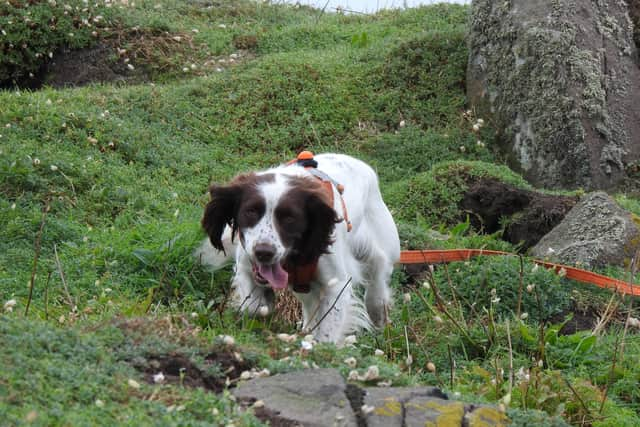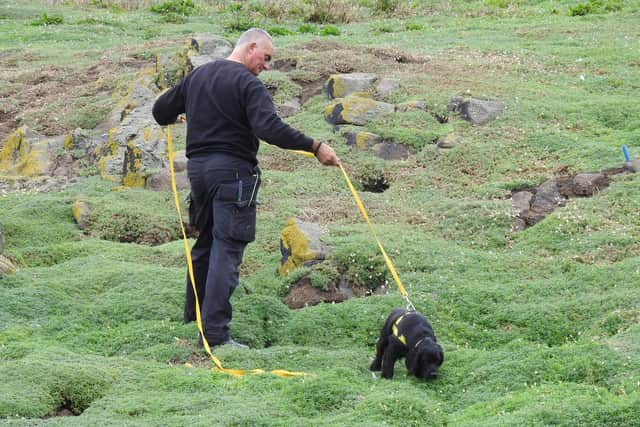Sniffer dogs deployed to detect burrowing birds on Firth of Forth island nature reserve
and live on Freeview channel 276
Storm petrels were confirmed to be breeding on NatureScot’s Isle of May National Nature Reservefor the first time this summer, and with the sniffer dogs’ assistance, the location and extent of the colony has now been confirmed.
The nomadic birds breed in the UK during the summer but spend their lives out at sea. Most of the 26,000-strong UK population can be found on remote islands and the species is notoriously difficult to monitor due to its nocturnal habits and preference for remote, rocky islands.
Advertisement
Hide AdAdvertisement
Hide AdFive sniffer dogs were trained to locate the scent of storm petrels underground in their burrows after all the other seabirds had left the island. They detected 63 confirmed positive responses – revealing burrows and indicating that pairs were nesting.


David Steel, Reserve Manager at the Isle of May, said: “These special seabirds come ashore under the cover of darkness and nest underground in crevices, burrows, cairns or stone-walls, raising a single chick. During that time, their activities – singing away in total darkness, as well as their unique musky smell, make these birds so fascinating and mysterious.”
Dr Mark Bolton, the leading authority on storm petrels in the UK and a Principal Conservation Scientist for the RSPB, said the storm petrel discovery was ‘very exciting’.
He continued: “The fact that specially-trained scent dogs were used to locate many of the nesting sites is ground-breaking in the UK, and I hope it heralds a new era of greater use of scent dogs for seabird monitoring here.”
Advertisement
Hide AdAdvertisement
Hide AdSimon Chapman, Senior Trainer at K9 Manhunt & ScentWork Scotland, added: “Having trained lots of different dogs over the years on a vast array different odours, this was a first for us to work in conservation and to locate a new colony of nesting seabirds. Dogs are a cost effective and fast method to cover the ground when conducting these types of surveys.”


Over the years, volunteers at Scotland’s oldest bird observatory on the island have been ringing non-breeding storm petrels and tracking their subsequent movements. Recoveries of ringed birds have shown links to much of the traditional range, mainly to the north and west of Scotland and Ireland.
A message from the Editor:
Thank you for reading this article. We're more reliant on your support than ever as the shift in consumer habits brought about by coronavirus impacts our advertisers.
If you haven't already, please consider supporting our trusted, fact-checked journalism by taking out a digital subscription.
Comment Guidelines
National World encourages reader discussion on our stories. User feedback, insights and back-and-forth exchanges add a rich layer of context to reporting. Please review our Community Guidelines before commenting.